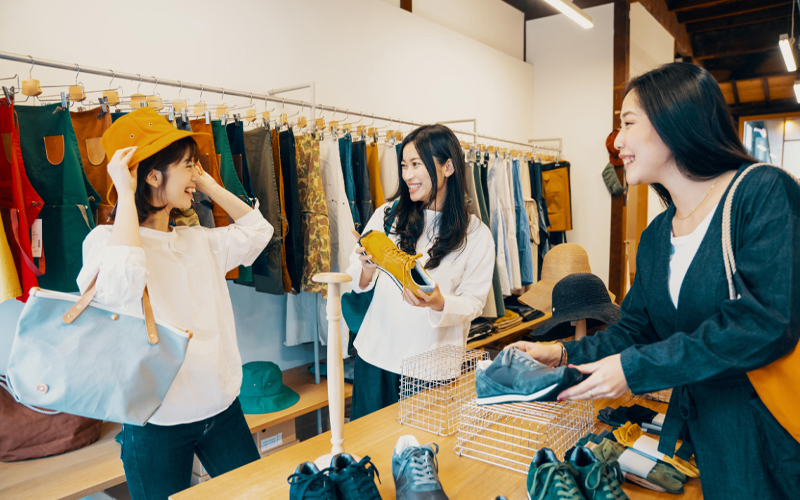Retailers have faced immense challenges in recent years, from the pandemic and supply chain disruptions to inflation and evolving consumer expectations. Digital advancements have reshaped shopping habits, making it crucial for businesses to rethink their strategies. Business growth depends on more than just competitive pricing — it requires a strategic approach to the entire retail experience, including retail store design. Thoughtful design influences consumer behaviour, enhances engagement, and drives sales.
This article explores how optimising product placement, store design, and layout can turn foot traffic into revenue and how technology can create a more compelling retail customer experience.
How store layout influences consumer behaviour and sales
A strategically designed store layout guides customers smoothly through the store, increasing dwell time and maximising exposure to merchandising strategies. Optimising store flow enhances the shopping experience while also contributing to significant sales growth. Thoughtfully arranged retail displays, for instance, can boost sales by up to 540% compared to unorganised setups.Every element — aisles, product placements, and focal points — must work together to create an engaging environment that encourages purchases.
The science behind strategic store design
Consumer behaviour is deeply influenced by how products are displayed and how shoppers move through a store. Several psychological principles shape purchasing decisions:
- The decompression zone: The store entrance acts as a transition space where customers adjust to their surroundings. Since shoppers are still acclimatising, placing promotional materials here is often ineffective.
- The power of the right: Shoppers naturally tend to move towards the right upon entering. Placing high-margin products or key displays in this area can enhance sales.
- The speed bump strategy: Well-placed displays, promotional sections, or interactive zones act as “speed bumps,” slowing down customers and encouraging them to explore more products.
Maximising sales through thoughtful store layouts
A well-planned store layout improves the shopping experience and subtly guides purchasing decisions. Key design retail merchandising strategies include:
- Encouraging exploration: Placing high-margin products at eye level and daily essentials deeper within the store prolongs shopping time, increasing the likelihood of additional purchases.
- Stimulating impulse buys: Strategically designed pathways lead shoppers past complementary products, sparking unplanned purchases. Studies show that about 62% of shoppers make impulse buys when drawn to attractive displays.
- Enhancing navigation and engagement: Clear signage, visually appealing displays, and well-lit sections create a seamless shopping journey, making it easier for customers to find products while enhancing their overall experience.
By integrating these principles, retailers can optimise store layouts to influence consumer behaviour, drive sales, and create a more engaging shopping environment.
Types of store layouts and their impact
Different store layouts cater to varied retail objectives and consumer behaviours. The choice of layout should align with the store’s branding and customer flow expectations.
Grid layout
Commonly seen in supermarkets and pharmacies, this structured format maximises space efficiency. While it allows customers to locate items quickly, it may not encourage exploration beyond the shopping list.
Racetrack (loop) layout
This layout encourages a guided shopping experience, ensuring customers move through the entire store. It is effective for department stores and large retail spaces.
Free-flow layout
Often found in high-end boutiques, this layout provides an open and relaxed atmosphere, encouraging browsing. However, it requires strategic retail merchandising to ensure customers see the maximum number of products.
Technology’s role in enhancing store design
Forward-thinking retailers are leveraging technology to create optimised layouts that enhance the retail customer experience. Some of the key innovations include:
AI-powered heat mapping
AI and computer vision technologies help track customer movement patterns, allowing retailers to adjust store layouts based on real-time data.
Smart shelving solutions
Digital shelves can display dynamic pricing and promotions, optimising sales per square foot.
Augmented Reality (AR) displays
Virtual try-ons and interactive displays improve engagement and reduce purchase hesitation.
RFID and IoT sensors
These technologies help in monitoring inventory placement and customer-product interactions, ensuring efficient product restocking and merchandising strategies.
Generative AI
GenAI enhances store design by analysing customer data to create optimised virtual models and personalised shopping experiences. This improves efficiency and sales.
Point of Sale (POS) systems
POS systems indirectly impact store design by providing sales data, guiding product placement, and optimising inventory management to enhance customer flow and sales performance.
The future of retail store design
As customer expectations evolve, so must store design and layout strategies. The future of retail design will be heavily influenced by:
Hybrid shopping experiences
A seamless integration of online and offline experiences, with in-store pick-up options and digital touchpoints for product recommendations.
Sustainable store designs
Eco-friendly materials, energy-efficient lighting, and sustainable packaging solutions will become critical aspects of modern store layouts.
Personalised shopping journeys
AR-powered store apps can offer dynamic navigation based on individual shopping lists, directing customers along the most efficient path while exposing them to relevant promotions.
How can Infosys BPM enhance retail customer experience with AI-driven store design?
Transform your store operations with AI-driven, automated, and analytics-powered solutions from Infosys BPM. Our offerings include retail analytics for data-driven decisions, omnichannel integration for a unified shopping experience, and AI-powered loss prevention. Enhance productivity, reduce costs, and elevate customer experiences with cutting-edge solutions tailored to modern retail challenges.







